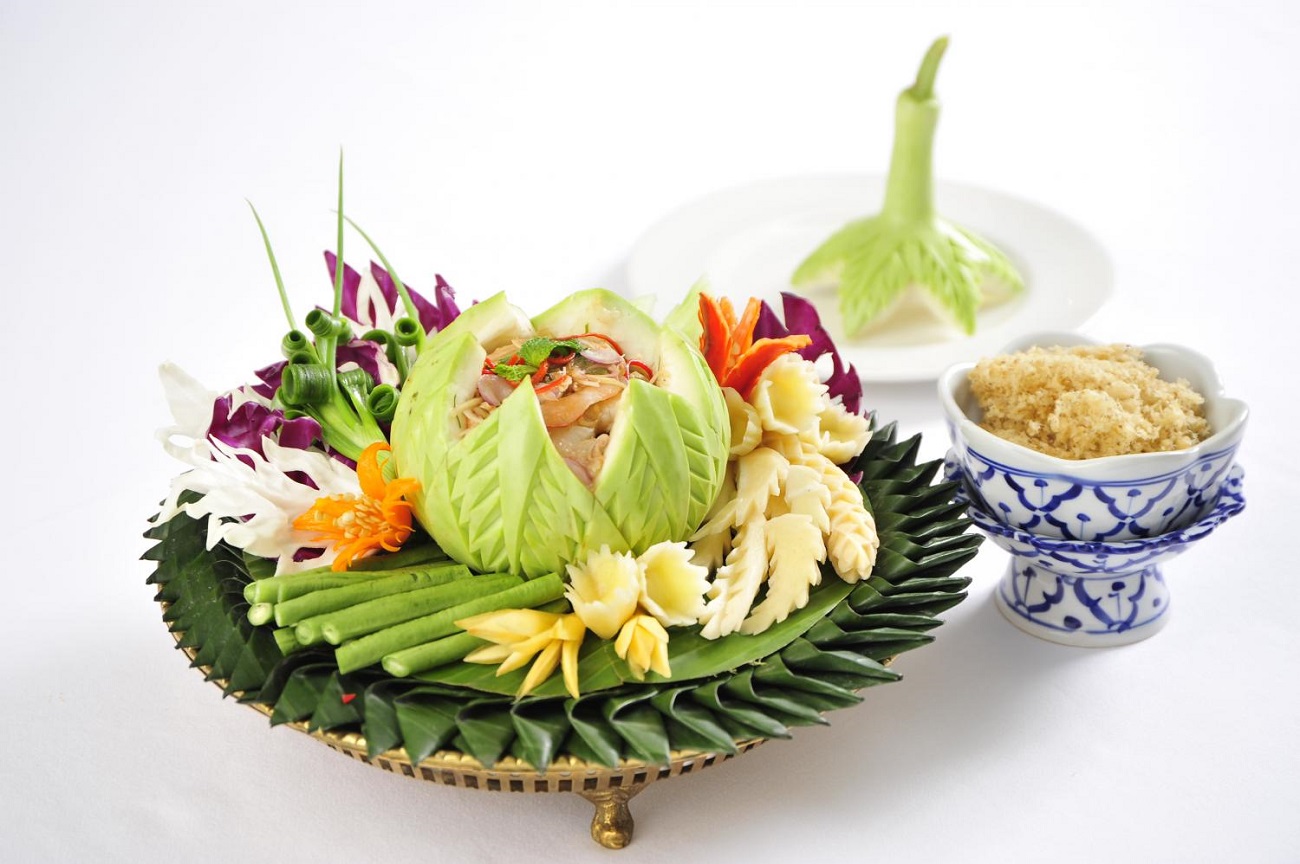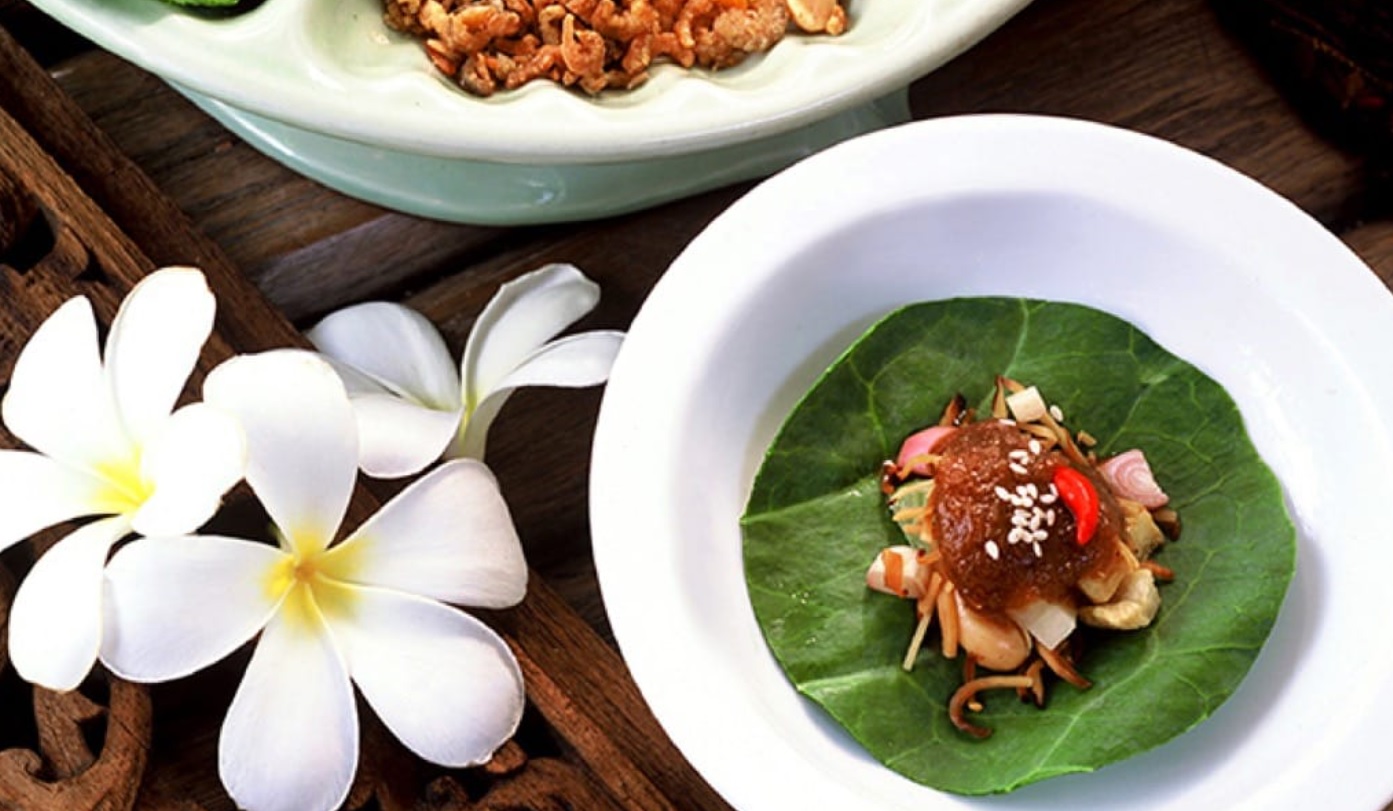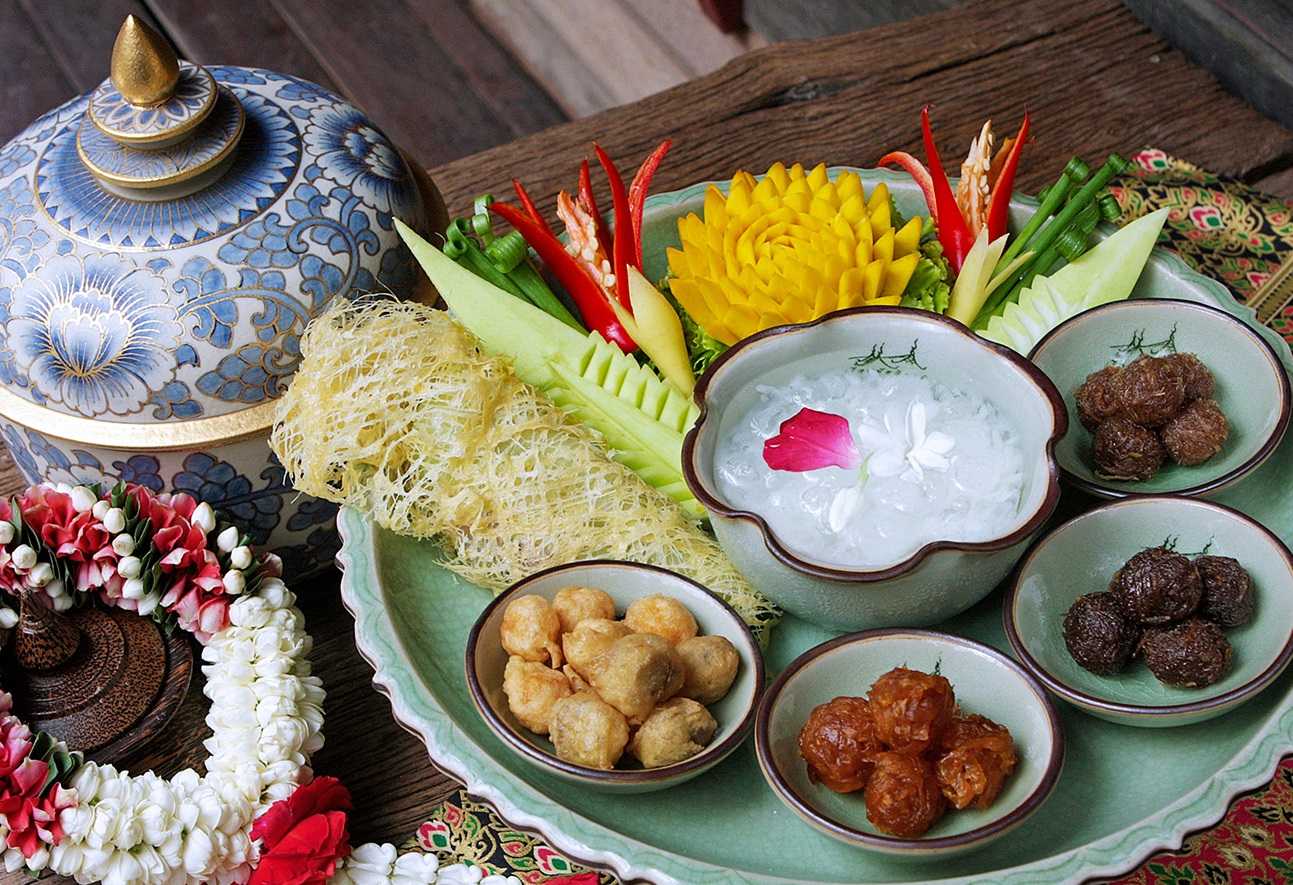More than just a collection of recipes, royal Thai cuisine is a cultural language. A reflection of elegance and restraint, this culinary tradition once graced the tables of monarchs. Distinguished from everyday Thai cooking by its formality and discipline, this cuisine demands balance in flavor, harmony in presentation, and respect for ritual.
In the royal courts of Siam, food was never only about sustenance. Each dish was designed to embody dignity, from the arrangement of herbs to the cut of a vegetable. Specific rules existed for the preparation and serving, including no overpowering flavors, no careless plating, and no shortcuts in preparation. What emerged was a culinary tradition that elevated Thai identity and preserved it as a symbol of refinement and distinction.
While Royal Thai cuisine remains exclusive in modern times, its influence extends well beyond Thai palace walls. Carefully maintained by chefs, culinary schools, and fine dining institutions, it offers a window into Thailand’s cultural and historical soul.
Historical Roots and Cultural Significance

Origins of Royal Thai Cuisine
The origins of royal Thai cuisine date back to the early palaces of Ayutthaya and Sukhothai, where meals served to the royal family had to adhere to specific rules and standards. Ingredients had to be pure, methods precise, and the results elegant. Chef McDang, a direct descendant of the Chakri Dynasty and one of Thailand’s most authoritative voices on the subject, recalls memories of palace dining where even something as simple as fish was served whole, pale and pristine, its head intact.
Evolution Over Time
Over time, royal Thai cuisine underwent an evolution, where it absorbed outside influences while retaining its Thai essence, especially during the Ayutthaya and the Rattanakosin periods. Spices from Persia, Portugal confectionery, and cooking techniques from China all found their way into the royal kitchen. While outside influences of flavors and ingredients arrived, they were tempered and adapted, and crafted into recipes that maintained balance and authenticity. Over time, these dishes were recorded by palace scribes and made into formal culinary canons, ensuring their continuity for many generations.
Cultural Importance Today
Royal Thai cuisine may have ancient roots, but it continues to represent Thailand’s royal identity. It’s more than just an aesthetic choice, but it encapsulates the country’s culinary philosophy: patience, balance, and respect for tradition.
Typically, state dinners and cultural ceremonies feature the royal table, which reinforces their rich cultural identity through culinary pleasures. The values of this cuisine mirror the qualities that Thailand holds in high regard, which are refinement, discipline, and beauty.
Related article: What Makes Thai Food Thai
Defining Characteristics

Royal Thai cuisine is precise rather than extravagant. Flavors are carefully crafted to be balanced: spicy yet not harsh, sour yet never overwhelming, and sweet yet restrained. Each element complements the other, creating a harmony that lingers without fatigue.
Related article: Spotlight Spice: Thailand’s Love of Spicy Food
Presentation is central. Vegetables are sculpted into flowers, fruits are carved into birds or lotus blossoms, and rice is molded into shapes that echo cultural symbols. The eye is meant to feast before the palate.
Meals often follow a structured, multi-course pattern, with soups, salads, curries, and grilled dishes arranged in a sequence that builds both anticipation and satisfaction. Utensils and serving ware are chosen with equal care, porcelain bowls, gilded platters, and silver spoons that echo courtly decorum. This formality distinguishes royal dishes from the communal, hearty style of central Thai cuisine, where flavors are bolder and rituals more relaxed.
Signature Royal Thai Dishes
Several dishes stand out as ambassadors of the royal kitchen. Tom Yum Gai, the coconut chicken soup familiar to many diners, appears in a lighter form when prepared to royal standards. Coconut milk is balanced with galangal, lemongrass, and kaffir lime leaves, resulting in a broth that is aromatic but never heavy.
Curries, or gaeng, are crafted with freshly pounded pastes, simmered to allow herbs and spices to marry into a delicate whole. Unlike rustic versions, these curries are silky and refined, served in porcelain bowls with small portions of rice and are also considered as one of the country’s go-to comfort foods.
The most visible mark of the tradition is fruit carving, which originated in royal kitchens during the Sukhothai period. Platters of papaya, watermelon, and mango are transformed into intricate displays, showcasing not only culinary skill but also artistry rooted in centuries of practice.
Thailand’s most iconic soup and one of Thailand’s must-try dishes – Tom Yum Goong, was declared part of Thailand’s National Cultural Heritage in 2021, holding a special place in the narrative. While it is widely enjoyed throughout the nation, its formal recipe was included in the 1964 palace text, “Food of the Royal.”
For those wishing to taste these dishes today, Bangkok institutions such as Blue Elephant and Ruen Mallika remain among the few places where royal recipes are preserved and presented with authenticity.
Royal Thai Cuisine in Modern Gastronomy

Present-Day Recognition
Royal Thai cuisine has earned its place in the international fine dining scene. Culinary institutions, such as restaurants and schools, have been featured in the Michelin Guide, attracting diners from all over the world who wish to explore the cuisine’s refinement and cultural heritage.
Aside from that, experiencing Royal cuisine goes beyond mere dining. In Bangkok and Chiang Mai, cooking schools offer hands-on lessons on sourcing, preparation, and serving. Within cultural centers and museums, a showcase of palace dining is highlighted. And when it comes to itineraries, tour guides incorporate cuisine into cultural immersions, where visitors can savor meals in meticulously designed settings that evoke the opulent royal past. These experiences not only educate and inspire discovery but also transform a simple meal into a journey of cultural and historical experiences.
Futhermore, gastronomy and leisure go hand in hand in Thailand. After indulging in an elaborate royal feast, visitors retreat into their luxurious accommodations, such as Phuket private villas and holiday homes in Koh Samui. Merging the quietness of island life and the richness of the dining table, it serves as more than just a vacation, but an immersion in heritage cuisine and contemporary comforts.
Thailand is more than just a place to rest; it is a destination where history, culture, and luxury coexist.
Related article: How Different are the Villas in Phuket & Villas in Koh Samui
Culinary Diplomacy & Global Outreach
The Thai government launched the “Global Thai” program in 2002, which recognizes food as a vehicle of cultural diplomacy. Its mission was simple: to make Thai cuisine known worldwide. In less than a decade, the number of Thai restaurants outside the country doubled from 5,500 to over 10,000, positioning Thai food as one of the world’s most accessible cuisines. Within this expansion are royal dishes that serve as cultural flagbearers, representing the height of Thailand’s culinary identity.
Market Scale & Growth
The economic footprint is significant. Fortune Business Insights valued the global Thai cuisine market at USD 9.00 billion in 2024, with projections rising to USD 16.46 billion by 2032 at a compound annual growth rate of 7.88%. Royal Thai cuisine represents the highlight of this market, setting a standard that elevates the perception of Thai food across all segments.
Culinary Tourism & Experiential Travel

Thailand’s culinary tourism is thriving, with Credence Research estimating its culinary tourism market at USD 32.49 billion in 2024, with forecasts suggesting growth to USD 80.73 billion by 2032. Guided market tours, cooking classes, and curated dining experiences have become the main draws and attractions for travelers, drawing visitors who seek more than just sightseeing and outdoor adventures.
Numbers in 2024 show that international tourists spent USD 42.7 billion in Thailand, a sharp 43.8% increase from the previous year. This data shows a growing appetite not only for beaches and temples but also for cultural immersion, with Thai cuisine being a cornerstone. Gastronomic experiences are increasingly part of luxury travel itineraries, appealing to those who value both authenticity and cultural heritage.
A Testament to Refinement
Overall, Royal Thai cuisine, born from the exclusivity of the royal court, stands as a living testament to Thailand’s cultural refinement. Rooted in centuries of palace traditions, it embodies artistry, harmony, and precision, serving as both a culinary standard and a cultural symbol. As Thai cuisine gains global acclaim and draws travelers through culinary tourism, the royal table continues to inspire, reflecting not only what Thais eat but also how food shapes the nation’s identity. To experience it is to savor history in its most elegant form—a philosophy of balance that nourishes the body while uplifting the spirit.
–
Featured Image: MICHELIN Guide







